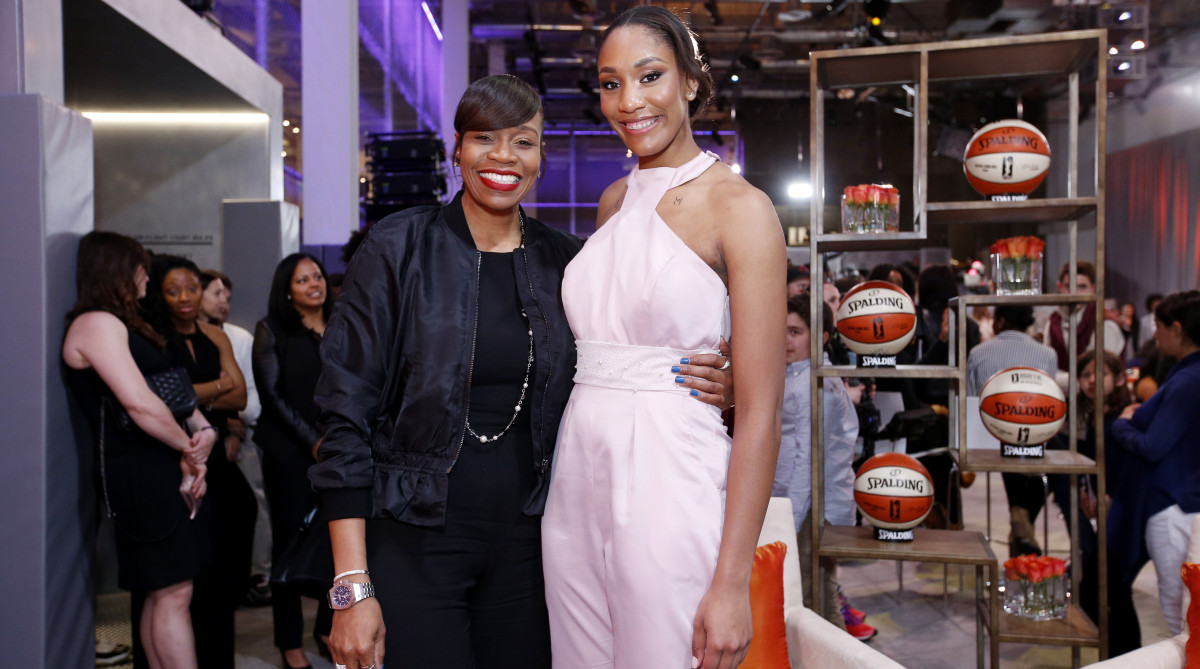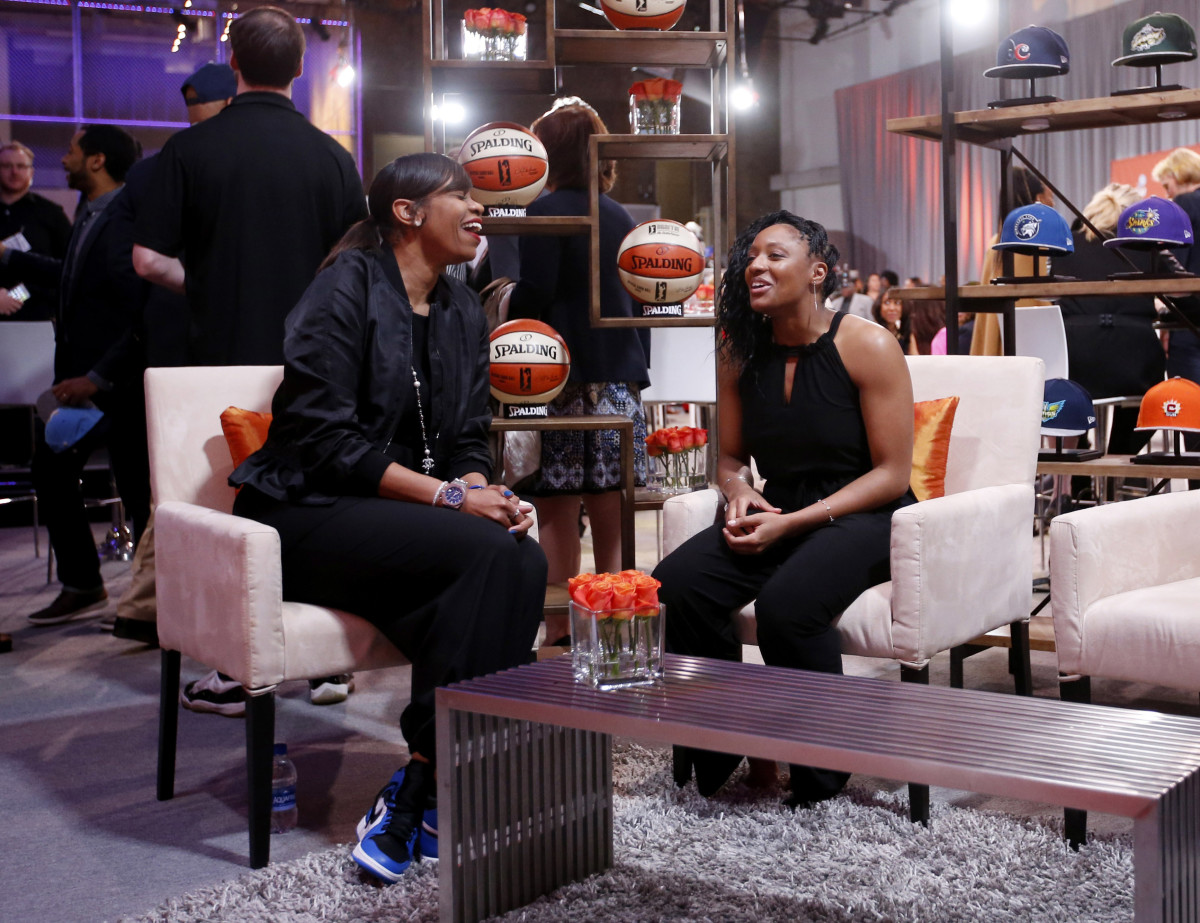The Glitz and Glamour of WNBA Draft Inspires Young Girls

Between the glittering gowns and celebratory dances, the tears of joy and hugs from players’ families and adopted families alike—teammates, coaches, mentors, friends—and the extravagant spread of hors d’oeuvres, 10 WNBA draft picks saw their greatest hopes realized. Meanwhile, a group of 11 and 12-year-old girls observed the WNBA draft with big eyes, their dreams expanding.
The WNBA is a place where “women have equal and unfettered opportunity to play the game they love and excel as elite professional athletes,” WNBA president Lisa Borders said at last night’s draft, adding, “Somebody, say amen!”
But the reality is that the WNBA is far behind its male counterpart by every statistic. Last season, the WNBA broke attendance records with over 1.5 million fans cheering on its athletes. The NBA also hit a new record—nearly 22 million.
2018 NBA Finals Predictions: Can Anyone Stop the Warriors?
Lack of enthusiasm for women’s sports is something the nation’s been grappling with more openly in light of the newest wave of women’s movements. And after Notre Dame star Arike Ogunbowale’s dramatic finish in the NCAA Championships last month, columnists and fans argued for more coverage of women’s basketball, specifically.
Many of last night’s draftees expressed optimism about the WNBA. “We’re here at Nike headquarters, it shows growth,” said A’ja Wilson, the top draft pick to Las Vegas. Wilson says she's hoping “to use my platform to help young girls out. To know, you can hoop,” she said. “Our young people—and especially our girls—are our future.”
“If you look at today’s game, they’re playing the same style that the men are playing,” said Macky Bergman, founder of the New York City-based youth basketball organization Steady Buckets. “They’re shooting the three ball, they’re shooting pull-up jump shots off the dribble, they’re D-ing up with all kinds of intensity and taking charges. When I watch it, I love it.”
Bergman, 35, was at the draft with eight middle school girls from Steady Buckets—a last minute opportunity they were offered through their partnership with the Brooklyn Nets. The organization served 1,945 kids last year, and while girls only make up about a fourth of participants, they’re the fastest growing group.

Sitting at a high-top table to the right of the stage at Nike’s NYC headquarters, the girls nibbled on their chips and guacamole and sipped their sodas amid bursts of excited chatter. They were waiting to meet WNBA Hall of Famer, Tina Thompson. Thompson was tucked into a living room set up in the corner of the converted basketball court, where she had a scheduled chat with each of the draftees after they were picked. But first, she was meeting with the kids.
Amelia Camilleri, 12, is in sixth grade at East Side Middle School in Manhattan. Her cousin introduced her to Steady Buckets, and she’s been going since September. “I never knew about basketball,” she said. “I was totally a beginner. But I work really hard so I’ve improved a lot.”
If there’s one thing that the nation can always agree on, it’s that middle school can be tough. It’s awkward. It’s uncomfortable. Kids can be mean. But these girls described Steady Buckets as a respite from all that. “Steady Buckets is so motivational,” said Camilleri, perched on her chair, swinging her legs. “It’s never awkward, you go in and it’s so comfortable.”
2018 NBA Awards Picks: Has James Harden Finally Earned His MVP Moment?
“I might wanna work for the WNBA,” said Sofia Tokarczyk, looking around the lavishly decorated basketball court in awe. Tokarczyk, 11, is another sixth grader from Clinton Middle School. She’s been going to Steady Buckets for two years. “Being a reporter would be cool, too,” she said. “I haven’t decided what I’m gonna go for.”
Steady Buckets is “an innovative basketball, physical fitness and life skills development program” with participants from 142 of New York City’s 178 zip codes. Bergman created the program to fill a hole he saw in the current youth basketball landscape: that athletes either have to sacrifice quality skills training for an inclusive and well-rounded program, or submit to a cutthroat, win-first attitude to be on a team that will hone the technical skills.
Bergman started the program with Barry Weiss in 2010 with five goals for participants: set new personal bests, challenge mental and physical comfort zones, improve self-confidence by meeting goals, have fun and make friends. And it’s free.

While the coaching staff is currently male-dominated (only about four of 20 are women), that’s something Steady Buckets is trying to improve. “It doesn’t feel great that we don’t have a lot of [women] coaches,” said Bergman.
Erika Encalada, 40, is one of Steady Buckets’ female coaches. Her 12-year-old daughter, Caitlyn Ortiz (also in attendance at the WNBA draft), was nervous when she started three years ago, hardly knowing how to dribble. She was inspired by the WNBA games they went to together: “Now she always wants to go [to Steady Buckets], I don’t even have to tell her.”
Ortiz and her teammate, Ericka Stuckey, have their sights set on the WNBA. “I’m happy and nervous a little!” said Stuckey, 11, about attending the draft. She was hoping for new players on her favorite teams—the Liberty, Sparks, and Mercury.
“Hopefully we live in a world one day where the WNBA is just as well respected as the men’s game,” said Bergman, “And that these incredible women get paid what they deserve to get paid.”
Steady Buckets is doing its best to help women’s basketball get there. Maybe one day Ortiz, Stuckey, Tokarczyk and Camilleri will be attending their own draft—and maybe to an even larger crowd.
